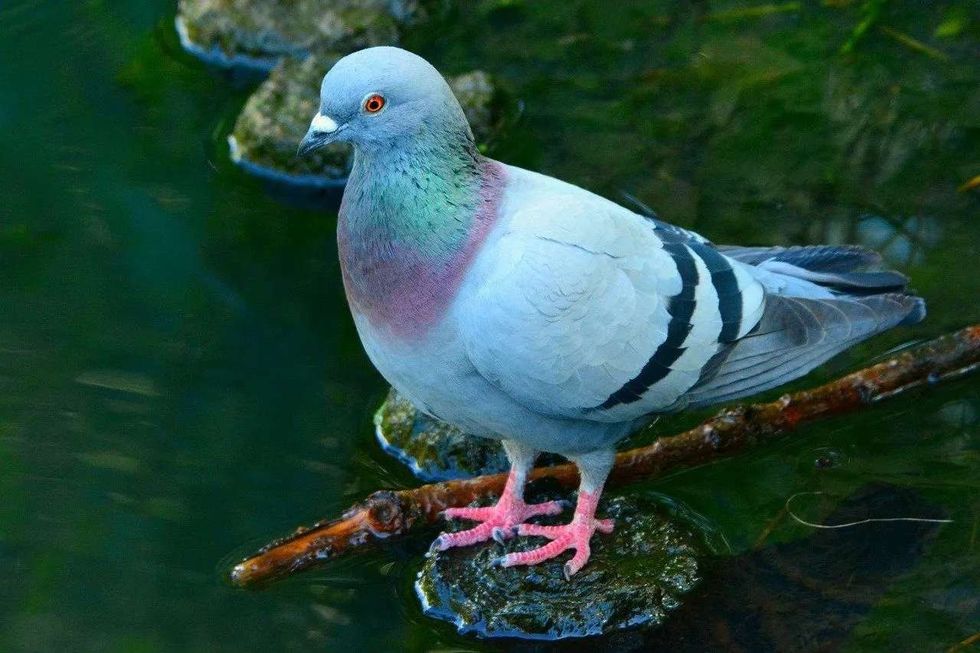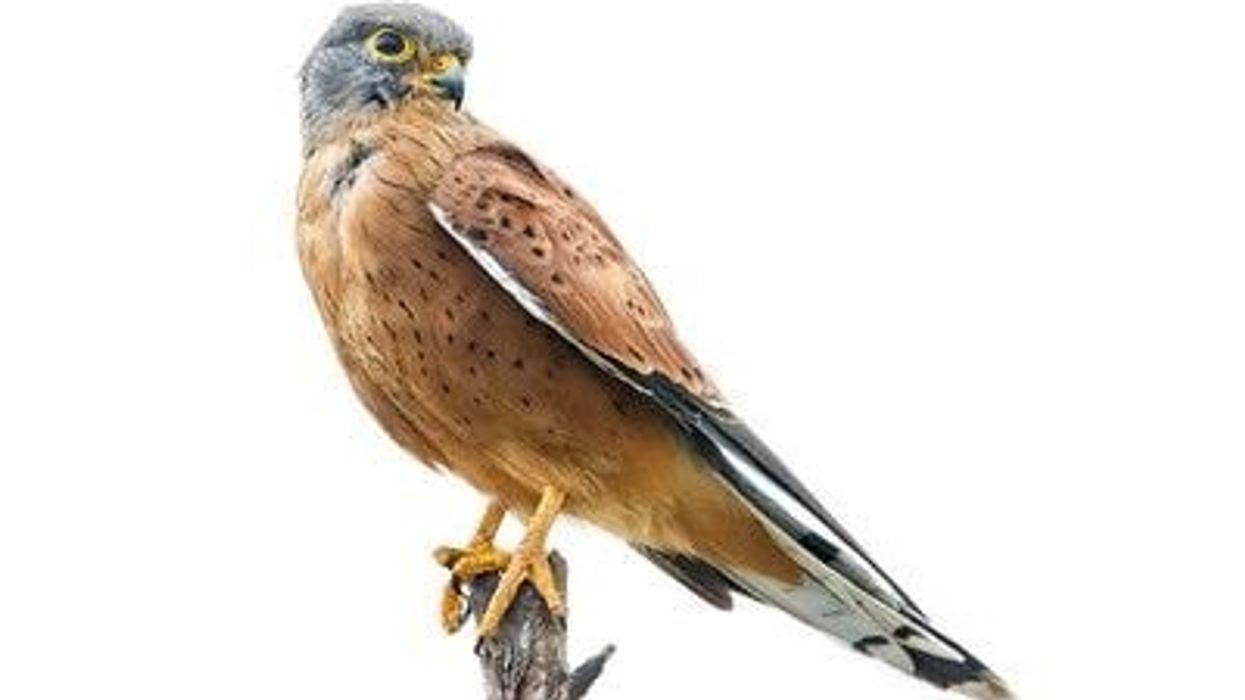The Rock dove, Columba livia, is also commonly called a common pigeon, rock pigeon, or just plain pigeon. These species have 12 subspecies with the domestic pigeon being one of them. The number of feral pigeons across the world has been boosted by escaped domestic pigeons.
The wild rock pigeons are pale gray and each wing has two dark bands. There are only a few distinctions between the cock and the hen. The species breeds with only one mate at a time.
Their habitat ranges from open to semi-open surroundings. For roosting and breeding in the wild, cliffs and rock ledges are preferred by the rock doves. Pigeons had first been discovered as wild animals in Europe, North Africa, and Western Asia.
They are now found worldwide in huge populations. Their diet includes seeds, fruits, grains, and sometimes invertebrates. The Wild Rock doves are famed for their capability to fly long distances and find their way home miraculously.
They were also called homing pigeons. Want to know why? We suggest you keep on reading.
If you like reading about the Rock Dove, you will find our animal facts about the macaw and red finch exhilarating.
Rock Dove Interesting Facts
What type of animal is a Rock Dove?
The Rock dove is a species of bird that belongs to the family Columbidae. Its scientific name is Columba Livia. It is a granivorous bird. Granivorous animals are those that feed on grains.
What class of animal does a Rock Dove belong to?
The Rock doves belong to the class Aves and the genus Columba.
How many Rock Doves are there in the world?
The Rock Dove pigeons population is spread worldwide including throughout western and southern Europe, North Africa, North America, and encompassing South Asia. The population in Europe is approximately 17-28 million feral and wild birds and up to 260 million pigeons in the world.
Where does a Rock Dove live?
Rock doves nest in open shrubs or the cracks in a rocky seaside cliff. Old farmhouses in rural regions are occupied by these pigeons as well.
In cities, tall buildings replace the natural cliff environment of the rock doves. These birds are generally found worldwide, namely, in western and southern Europe, throughout all of North America, northern Africa, and South Asia.
What is a Rock Dove's habitat?
These birds forage alone as well as in flocks both at dusk and in the mid-afternoon. This species is most frequently spotted throughout the day, particularly on skyscrapers, window ledges, or city parks. They roost on walls, monuments, or skyscrapers collectively. Rock doves reside in their local area and hardly leave their nesting area.
Who do Rock Doves live with?
Rock doves live in a nest with their significant other. Rock doves live near their species. These birds collectively forage and roost. These wild rock dove birds mainly flock while roosting, sunning, and feeding. They can do so individually as well.
How long does a Rock Dove live?
The life expectancy range of this species is 6-35 years.
How do they reproduce?
To allure a partner, the males pick a nest location in which they sit. Then they produce subtle murmuring sounds. They mate for life with one bird.
Rock doves breed in open shrub vegetation, window ledges, nooks, ledges on cliffs, crannies, and man-made buildings. These wild pigeons breed all year round. The males and females work together during nesting as well as raising the young.
The male rock dove pigeon brings her nesting material like sticks, stems, and straws which the female builds into a nest. Two eggs are laid in this nest by the female. The eggs of these pigeons are white and go through incubation for 16-19 days.
After the hatching of eggs, the young are fed pigeon milk. Pigeon milk is a fatty protein-rich liquid made by these birds. After about four weeks, the young pigeons depart from the nest.
What is their conservation status?
The conservation status of these birds is Least Concern as per the IUCN's Red List. These birds have a wide range of habitats in cities as well as in the wild in a wide range of locations. The population of this bird is widespread.
Rock Dove Fun Facts
What do Rock Doves look like?
It has red-colored eyes and a dark bluish-gray head, neck, and chest along with a magnificent purple iridescence on its slender neck and wing feathers which differentiates them from other birds. It looks stunning because of the chest with glossy yellowish, greenish, and red-purple iridescence.
Going down further, these pigeons have two dark bands on each of their wing as well as one band of blue-gray color on the tail. Their bill is a darker shade of grayish pink. Its feet are of salmon shade.
How cute are they?
These bluish-gray-colored pigeons make very cute murmur sounds. They bob their heads when searching for food which makes their movement very cute and funny. The iridescence across the chest is what stands out for the rock dove breeds.
How do they communicate?
The Rock dove call is a soft murmur called coo. They coo to communicate as well as attract each other. The Rock doves run or stroll back and forth when they snuggle. They roost on walls, monuments, and skyscrapers in cities collectively across the world.
How big is a Rock Dove?
The length of the Rock dove bird is anywhere between the range of 11-14 in (29-37 cm). Its wingspan range is 24-28 in (62-72 cm). It is two times the size of the Eurasian tree sparrow.
How fast can a Rock Dove move?
Their top speed is 62 mph (100 kph). Rock pigeons are not migratory birds. However, they have homing skills which help them in locating their nesting area. They can undoubtedly retreat to their own nest after flying for long distances.
How much does a Rock Dove weigh?
The pigeon, the Rock dove, has a weight range of 8-13 oz (238-380 g).
What are the male and female names of the species?
The male pigeons are known as cocks whereas the female pigeons are known as hens.
What would you call a baby Rock Dove?
The young of a Rock pigeon is called a squeaker or a squab.
What do they eat?
These cute birds forage for food while bobbing their heads. They eat mainly seeds, fruits, and grains. They feed on invertebrates rarely.
The diet of feral pigeons in cities ranges from popcorn, cake, peanuts, currants, and bread, which is generously provided or sometimes discarded by humans, to normal food like seeds and grains. The Peregrine falcons and Eurasian sparrowhawks are the predators of these birds, and 80% of their diet comprises feral pigeons.
The predators of these birds in North American cities are opossums and raccoons.
Are they poisonous?
No, these birds are not poisonous. They pose no significant threat to humans. However, their droppings and feathers can give rise to allergies.
Would they make a good pet?
Rock doves make fine pets and tend to be calmer in captivity as compared to other species.
Did you know...
This pigeon acted as a messenger for humans back in the old times. They were called homing pigeons. The Rock doves are referred to as homing pigeons as they can easily find their way back home even if they are blindfolded!
How do they do that? They direct themselves with the help of the magnetic fields of the Earth as well as the sun's direction. They use smell and sound as well!
Humans consume rock doves in countries like Ireland and Britain. It was initially brought to America for cooking purposes.
The Rock dove as a spiritual animal symbolizes love and sacrifice.
What is the difference between a Rock Dove and a pigeon?
Rock dove vs pigeon: Rock doves are bluish-gray with two black stripes on both wings, while the colors of domestic and feral pigeons vary.
How to tell if a Rock Dove is a male or female
Although there is not much difference between the male and female, there is one distinction. The female rock dove displays lesser iridescence compared to males.
Here at Kidadl, we have carefully created lots of interesting family-friendly animal facts for everyone to discover! Learn more about some other birds from our bee hummingbird facts for kids and burrowing owl surprising facts.
You can even occupy yourself at home by coloring in one of our free printable rock dove coloring pages.










